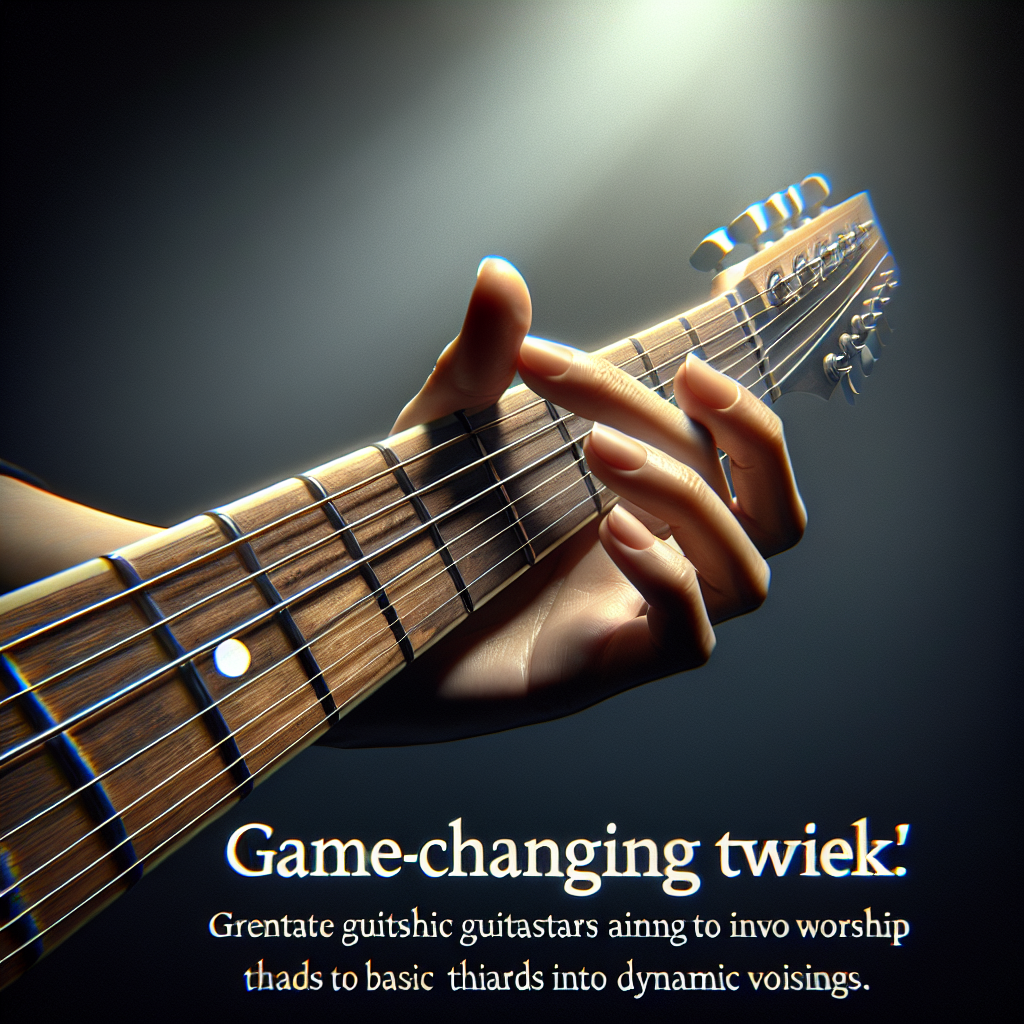Introduction
Are you feeling stuck in a worship guitar rut? Do you find your chord voicings and overall sound to be mundane and boring? Don\’t worry, because in this article, we\’re going to unveil a game-changing tweak that will transform your basic triads into dynamic voicings, bringing new life and creativity to your worship guitar playing. So get ready to reinvigorate your playing and discover a whole new level of musicality!
Transforming Basic Triads into Dynamic Voicings
Understanding Basic Triads
Before we dive into the transformation, let\’s first understand what basic triads are. Triads are three-note chords made up of a root, third, and fifth interval. These chords form the foundation of many songs and worship music. While they are essential, they can sometimes sound plain and lack the emotional impact we desire in our playing.
The Importance of Dynamic Voicings
Dynamic voicings, on the other hand, add color, spice, and emotion to your chords. By tweaking your basic triads, you can create voicings that have character and personality, taking your playing to a whole new level. These voicings will not only invigorate your sound but also evoke a powerful emotional response in your congregation.
Discovering a Small Tweak
Now, here comes the game-changing tweak. By applying a subtle adjustment to your basic triads, you can transform them into super dynamic voicings. This tweak involves altering specific notes within the chord to create more interesting and unique sounds. It\’s a small and simple adjustment, but its impact on your playing will be immense.
Demonstrating the Transformation
To give you a better understanding of how this tweak works, let\’s break it down and demonstrate it in action. We\’ll use a 4-6-5 chord progression as an example. I\’ll play the parts, and we\’ll analyze the notes and voicings.
Starting with a standard D major triad, we can transform it into a D add four by moving the A note down to G. This gives the chord a richer and more colorful sound. For the G major chord, instead of playing a plain vanilla triad, we can use a G sus 9 voicing by taking the B note down to A. This adds a sense of tension and depth to the sound. Moving on to the B minor chord, we can use a B minor 7 voicing by playing a D major triad over the B note. Finally, for the A major chord, we can use an A sus 4 voicing by moving the C# note up to D. These tweaked triads create voicings that are far from ordinary and will truly transform your playing.
It\’s important to note that voicings alone are just notes. To make them come alive, we need to add rhythms, phrasing, and articulation. In the example, we use a rhythmic pattern that mimics the drum groove, bringing a cohesive and energetic feel to the chords.
Conclusion
We hope this article has sparked your curiosity and ignited a newfound passion for worship guitar playing. By transforming basic triads into dynamic voicings, using the recommended worship reverb pedal, attending special workshops, and exploring the Worship Guitar Skills Pack, you have a wealth of resources at your disposal to take your playing to the next level. So go ahead, step out of that worship guitar rut, and let your creativity shine through your stellar voicings and rhythms. Keep strumming, keep practicing, and enjoy the journey of worship guitar creativity!

